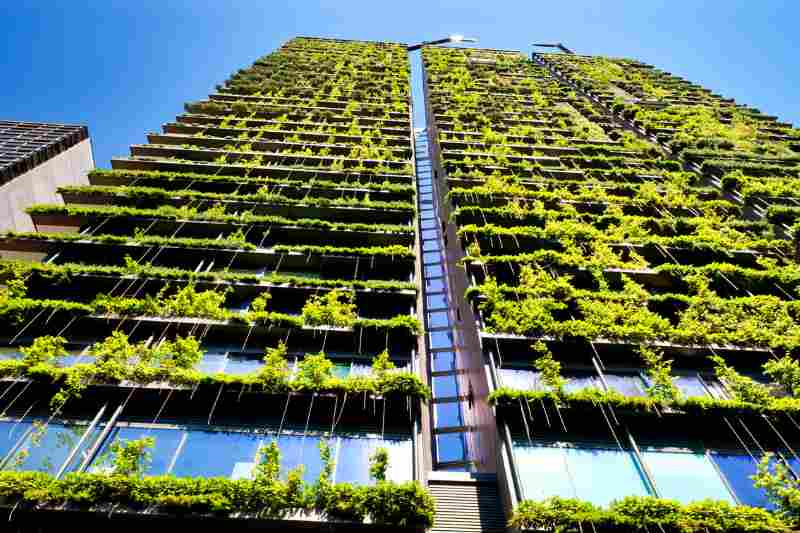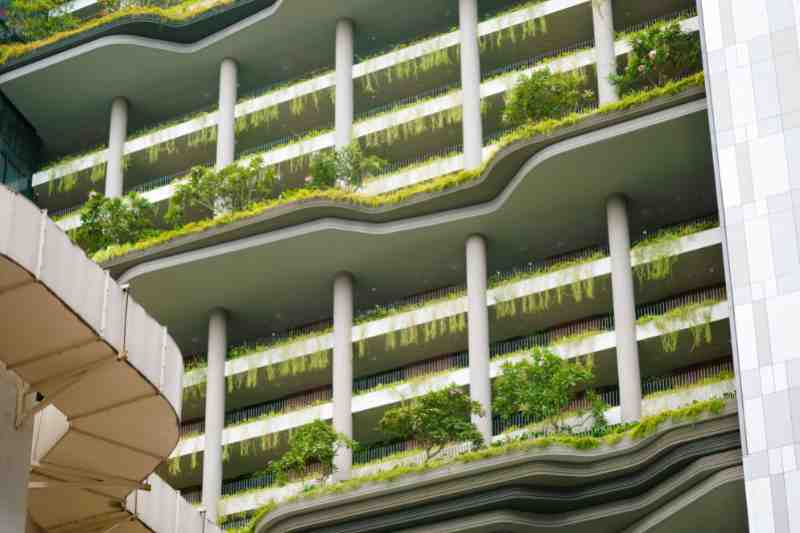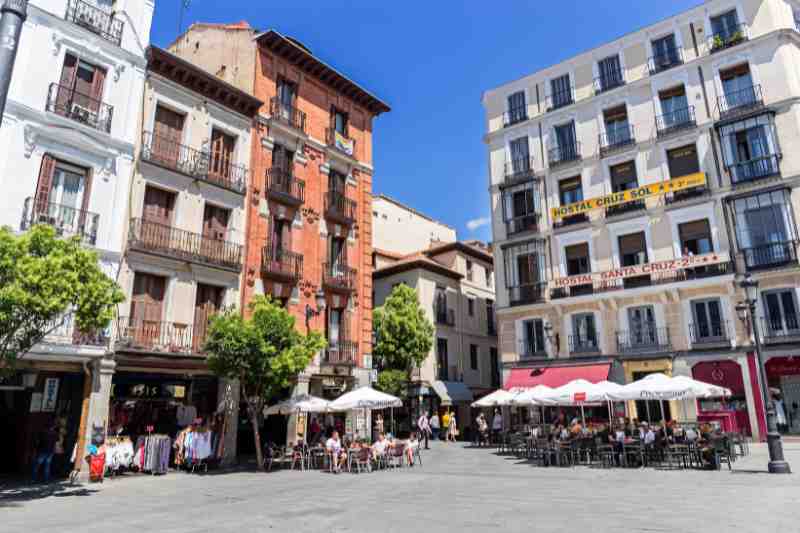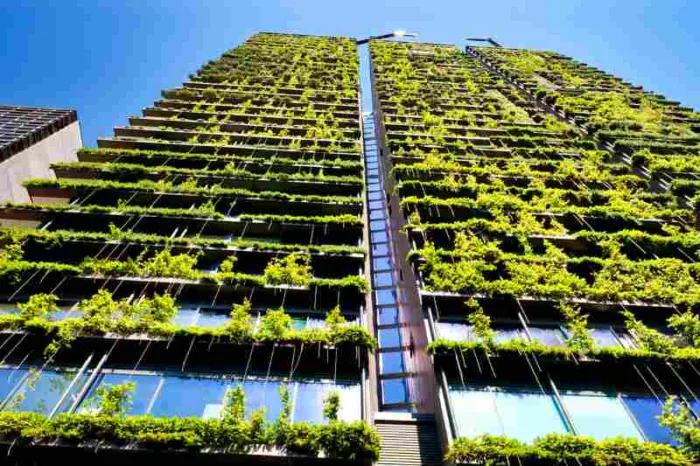
As climate change takes center stage in the world’s eyes, every industry is taking steps to reduce their emissions — and real estate developers and architects have the potential to make big differences. One new way to focus on sustainability and fight climate change is by embracing carbon-neutral architecture and pulling inspiration from the natural world.
In this post, we explain what carbon-neutral architecture is and why it’s important. Then, we outline the ways that you can take carbon-neutral ideas into your own buildings.
This post covers:
- What is carbon-neutral architecture?
- Why is carbon-neutral architecture important?
- How to develop carbon-neutral buildings
What is carbon-neutral architecture?
Carbon-neutral architecture is an architectural and design movement that emphasizes climate friendliness and sustainable practices by minimizing or eliminating a building’s greenhouse gas emissions at all stages of development and operation. By achieving carbon neutrality, buildings will reduce their contribution to climate change.
Where climate change is concerned, real estate is unfortunately one of the largest contributors. According to the International Energy Agency, 40% of all global emissions come from the built environment. In response, architects and inventors are working to reverse this trend by introducing new construction and design innovations, like smart building systems that manage resources more efficiently.
But carbon-neutral architecture doesn’t just mean changing up the design and architecture of one, singular building. The built environment affects people — and the number of emissions each person produces — in different ways. And carbon-neutral architects also ask how the design of one building can reduce emissions on a neighborhood or citywide scale.
For example, one prime contributor to CO2 emissions today is vehicle usage. So, carbon-neutral architects also strive to design properties that make it easier to use other modes of transportation, like walking or public transit.
By accounting for both a building’s individual design and its relationship to its surrounding neighborhood, carbon-neutral architects hope to reduce emissions in more than one way.
Learn more about sustainable building:
Why is carbon-neutral architecture important?
Carbon-neutral building design isn’t just good for the planet — it’s good for your bottom line, too.
Some benefits of carbon-neutral architecture include:
Help you save money
As you’ve learned, real estate accounts for a large portion of global CO2 emissions. But that’s a figure that represents a lot of opportunity for you.
By embracing carbon neutrality and cutting down on the CO2 your building emits, you also cut down on what you’ll have to spend to provide essential building services, like HVAC, lighting, and heat.
For example, let’s see what happens if you install a sensor-based lighting system. These can be motion or light detection sensors that turn your lights on only when they’re needed. If nobody’s in a room, or if a room is already receiving enough natural light, there’s no need to waste money by providing unnecessary lighting.
Achieving carbon neutrality can help you save money on your power bills and protect the environment — all at the same time.
Appeal to younger renters
Younger generations, like millennials and Gen Z, are becoming increasingly conscious of how their actions affect the climate. According to Forbes, over half of Generation Z considers sustainability before they make a purchase — and wise carbon-neutral property developers are already anticipating this trend and reacting accordingly.
As Gen Z enters the workforce and starts to take up a larger share of renters, you can stay ahead of the curve and ensure that your property lines up with their preferences by adopting carbon-neutral management practices.

How to develop carbon-neutral buildings
Whether you’re constructing, developing, or managing a building, there are things you can do to make your property more carbon-neutral.
3 ways you can develop carbon-neutral buildings include:
1. Use sustainable building materials
While it may come as a surprise, carbon-neutral building materials may actually be cheaper than traditional materials. Take wood framing, for example — it’s not just for smaller buildings anymore. Now that developers are emphasizing sustainability, wood-based innovations like lamination are proving the economic viability of sustainable building materials.
Compared to transporting heavier materials, like steel, to a build site, wood weighs much less — meaning that your transportation costs shrink. You can also decide to have wooden framing pre-fitted together before it arrives at the build site, which shortens construction time and saves you money in other ways.
2. Zone your property for mixed-use
Don’t worry: Carbon-neutral construction isn’t the only place where you can reduce emissions. Even if you take over an existing property, there are a lot of things you can do to go green.
Mixed-use properties help with carbon neutrality on a neighborhood-wide scale by concentrating all of the services people might need into one space. Compared to a spread-out neighborhood where every residential building is on one side of town and every shop on the other, a mixed-use building allows its residents to access a shop or service simply by going to a different floor.
Mixed-use buildings encourage walkability and increase a neighborhood’s density — factors that ultimately decrease car-related emissions and help keep the planet green.

3. Embrace biophilic design
One of the most efficient ways to balance out CO2 emissions is by embracing trees, plants, and other greenery that sucks CO2 out of the air and replaces it with oxygen. Emphasizing plant life on your property is called biophilic design — and it has positive effects beyond CO2 absorption.
Trees in urban spaces help absorb heat and provide shade. This is instrumental in mitigating the urban heat island effect, which occurs when concrete-and-steel buildings trap heat that would otherwise dissipate.
Plants also contribute to residents’ mental and physical health, ensuring resident satisfaction alongside carbon neutrality.
Takeaways
- Carbon-neutral architecture is a design movement that prioritizes the climate and reduces carbon emissions.
- Benefits of carbon-neutral architecture include saving you money and appealing to the preferences of younger, sustainability-oriented renters.
- Become more carbon-neutral by using sustainable building materials, zoning your property for mixed-use, and embracing biophilic design.






